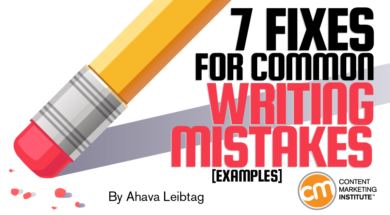
Ann Handley says writing isn’t hard, middle school is hard.
While I agree middle school is hard, I think writing is challenging. As it’s been said, “There is nothing to writing. All you do is sit down at the typewriter and bleed.”
Do we need to bleed when we write?
When you reframe writing as a practice, you can sit in the discomfort of knowing it’s never going to be completely easy. One of the joys of writing is that as soon as you reach the next level, the next mountain peak is staring at you. It’s like yoga, Pilates, golf, or medicine or law – it’s called a practice because when you stick with it you will improve.
But, as with any practice, there are things you can put in place to make it easier. I’m examining some techniques so you can have more writing tools to add to your toolbox.
Monkey mind of writing
Sometimes, when I sit down to write, thoughts are flowing through my head like a mighty river. But they won’t translate to the page the way I want them to. I developed two techniques to combat that monkey voice:
- Write anyway and worry about editing later
- Diagnose when I’m being sloppy or lazy, or using an easy technique to get out of working through the challenge
Write now and worry about editing later, says @ahaval. #writingtips Click To Tweet
Below are seven common writing problems and the fixes I use when I can’t type the words the way I need them to be. Later, I will go back, see where I’m going with what I wrote, and fix it. Or, I’ll ask an editor to help me.
1. Burying the lede
Writers make choices. Sometimes you make outstanding choices. And sometimes they are downright bad. Here’s an example of a writer who chose to talk more than necessary before getting to the delicious meat of the blog:
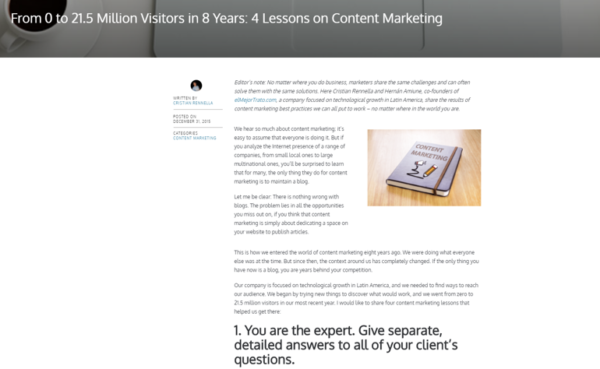
Where’s the beauty in this piece? The polished gem of persuasion? In the fifth paragraph.
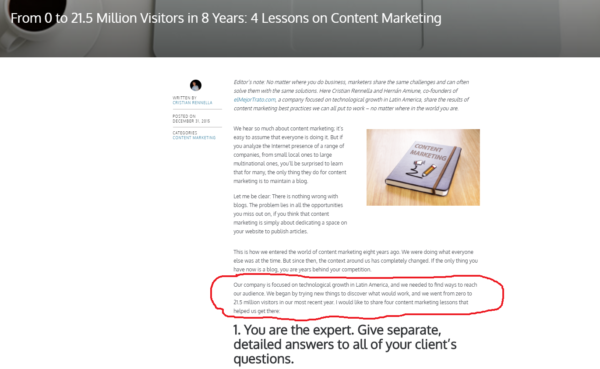
Fix: An excellent way to find your lede is to look at the bottom of your piece or the last paragraph before you introduce a new idea. It’s usually there, peeking out like an excited child playing hide and seek. Grab that fabulous example and paste it at the top.
Remember, as a writer, it’s your goal to give people the information they need to make decisions. Don’t make them wait for it. Otherwise, they’ll abandon your content like people in line for a sold-out movie.
CTT: Don’t make readers wait for the info they need or they’ll abandon your content. @ahaval #writingtips Click To Tweet
2. Too much jargon or too technical
As a writer, you think everyone recognizes your ideas and your vocabulary around those ideas. But if your audience doesn’t share your vocabulary, they won’t know or want to work hard to understand what you’re saying.
Using jargon to impress does the opposite, like wearing too much cologne on your first date. You know what works? KISS – keep it simple, stupid. (You are not stupid, but all writers need a bit of humility every now and again).
This content from IBM is confusing, yucky, and doesn’t really get to the point.

Fix: Check out how KPMG does it – its content gets to the point quickly, simply, and without asking you to believe their writers have advanced degrees.

HANDPICKED RELATED CONTENT:
3. It’s about us, not you
Only boring people talk about themselves all the time. Interesting people are interested in others. You should be interested in your customers – after all, they’re keeping you in business. Focus your content on addressing their pain points and needs AFTER you talk about them.
Verizon is so busy telling you about its technology it forgets to connect the dots of what truly matters to the customer.

Fix: What matters to customers? The benefits they will receive from using your service. Xfinity talks about speed, coverage, and control. These are the benefits customers want in their Wi-Fi provider.

4. Tone deaf
I really try to avoid this one, but I do it all the time. (Maybe I shouldn’t focus on it so much, and it won’t chase me?) In any case, tone deaf content addresses the user in a way that comes across as too familiar, insensitive, or just plain weird. Here’s an example from Loft:
Really, creepers? My friend was offended by this email. She felt like the brand was letting her know that it tracked her purchases. She knows it does but didn’t want to be reminded of it. And she hated all the blouses Loft said she would like. What a dangerous tactic to think you know your customer and then get it wrong. Like, #fail.
Tone deaf #content addresses reader in way that’s too familiar, insensitive, or just plain weird, says @ahaval. Click To Tweet
Fix: Here’s a better, more lighthearted approach taken by DSW:

5. Frankenstein content
You likely know this content problem if you’re an experienced writer. The text reads as if it was written by members of a committee who had different goals they were trying to accomplish. Usually the best way to diagnose this type of content is to notice when the voice and tone swish around the page like a snake’s tail. Here’s an example:

Notice the “yep” and the “ahem”? But later down the page, this “wink-wink” tone disappears.
Fix: Better to follow industry standard – no more than two editors. If you just spit out your coffee or hit your screen with your head in disbelief, remember it’s a goal, not somewhere you are. If you have more than two editors and a bajillion writers, you’re not satisfying your customers’ needs. Truth.
If you need more than 2 editors and a bajillion writers, you’re not satisfying your customers’ needs. @ahaval Click To Tweet
Now check out a better way with a consistent tone.
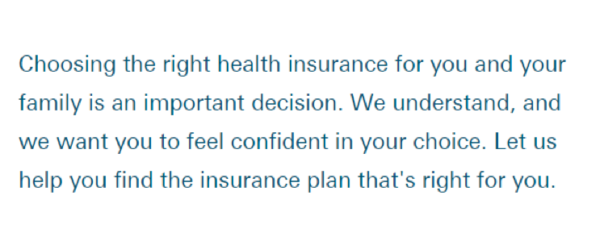
6. Flabby content
Oh flabbiness: Be gone from the world, from our bodies, and from our writing. Flabby content is easy to diagnose. It makes grandiose claims with no supporting statistics or proof points.
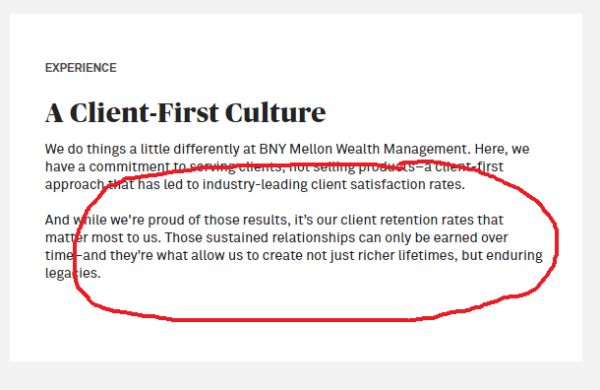
Fix: What are your client retention rates? Are they industry standard? Are they a percentage? Tell me, so I can believe you. Follow the lessons of Journalism 101. You need two sources and you can’t write it unless you can support it. Put backbone into your content by verifying that what you’re saying is indeed something you can prove.
Put backbone into your #content by verifying that what you’re saying is something you can prove. @ahaval Click To Tweet
7. Sea of sameness content
Boring, boring, bored. Don’t bother saying the same thing everyone else says. Here’s how Vistage does it right and then gets it wrong on the next screen.
On the home page, the value proposition is bold and unique: Who wouldn’t want to grow their company 2.2 times faster than other businesses?

But on the second page Vistage doesn’t give the reasons viewers need to believe the methodology will work.

Fix: However, when you look at Entrepreneurs’ Organization, it gives proof points that make you want to join (full disclosure: I’m a member of EO, but I had nothing to do with its content).
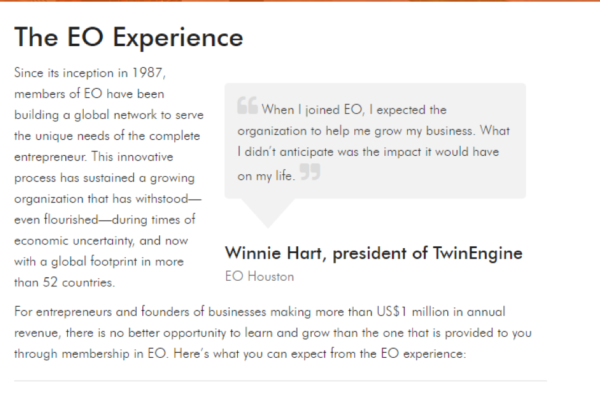
Conclusion
Every writer has tools in their toolbox. Some are razor-edged. But some have become blunt. These techniques will help you sharpen those tools and diagnose when you’re taking the easy way out.
Remember, sometimes you go to the mat, and sometimes the mat goes to you. As a writer, both are going to get the best out of you. Just keep plugging away.
Namaste.
Learn from the orator who said writing isn’t hard, middle school is hard, and many more experts in their content fields. Register for Content Marketing World Sept. 4-7 in Cleveland, Ohio. Use code BLOG100 to save $100.
Cover image by Joseph Kalinowski/Content Marketing Institute